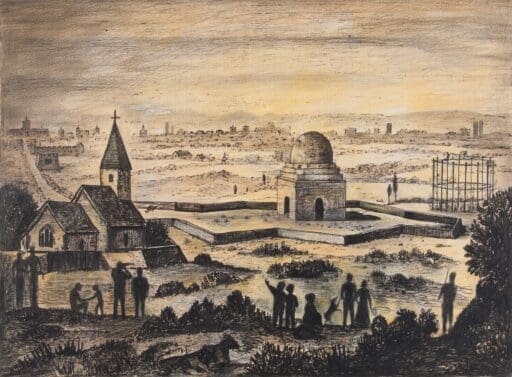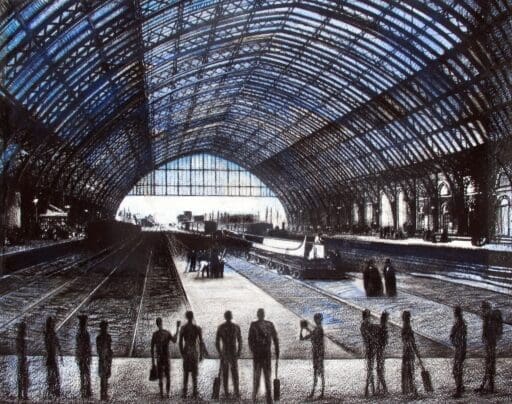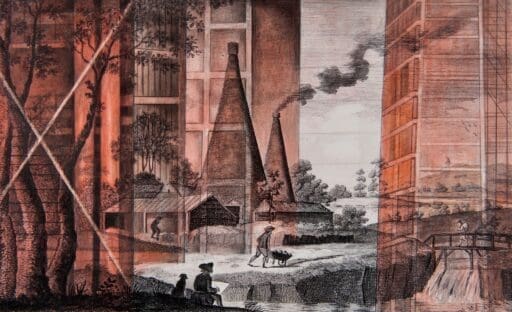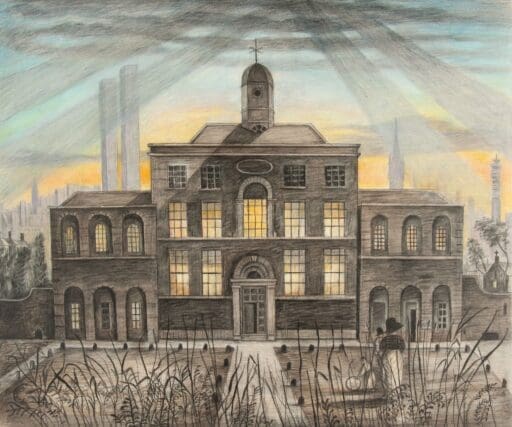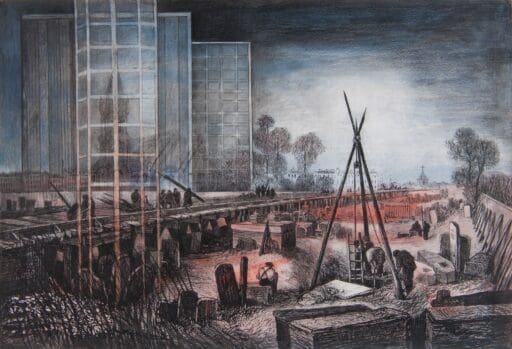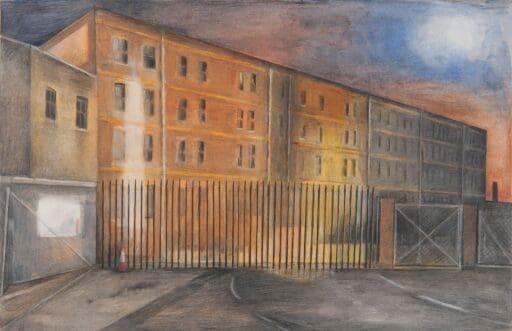Present in the Past
Renovation and Revival in King’s Cross Central
The Museum of London invited me to collaborate with their prints and drawings archives after visiting Remember Me, at the Guardian Media. Researching intuitively in the archives at the Museum of London and the London Metropolitan Archives, focusing on King’s Cross / St Pancras, I chose urban figurative narratives depicting ghosts, graveyards, death, health spas, foundling children, immigration and the built environment as starting points for collaborative drawings which evoked the passing of time through visual exchanges with the historic prints.
This led to the exhibition Present in the Past at Collyer Bristow, London, in 2015.
I had no plans to work with archives. It came about because a curator from the Museum of London visited my exhibition Remember Me at the Guardian Media, and asked if I’d like to collaborate with the Museum’s paintings, prints and drawings archive. This led to several further sets of drawings that re imagine the past through historical research.
My first visit to the archive was difficult. I followed the curator through the double doors at the back of the Museum entrance hall into a lift that opened onto a long narrow 1960’s style corridor, lined with brown doors. Entering a bland room, almost empty except for a table covered in solander boxes, he asked me to put on a pair of white cotton gloves and stood behind me while I looked through the drawings and engravings in the boxes. Many of them showed St Pancras Church and graveyard, where people wandered among tombstones, exercising little dogs. The material didn’t seem promising, but I took some photographs anyway, choosing the black and white 18th century prints with their linear graphic quality, rather than the 19th century water colour paintings, many of which also depicted churches.
It was hard to imagine, that day in the Museum of London, what I could possibly say in response to the archival images of churchyards. But later, while looking through the images, I noticed a man with a raised pickaxe in the background of each churchyard scene (he was preparing a grave for the next burial) and suddenly a different way of interpreting the scenes came to mind. I thought of Shakespeare’s graveyard in Hamlet , of Stanley Spencer’s Resurrection painting set in Cookham Churchyard, and the archival images began to suggest a springboard to my own narratives.
Eventually I discovered a wider selection of images and stories featuring spas, wells, hidden rivers, buildings and other structures like the fortifications of St Pancras during the English Civil War and then the interiors of the great railway stations St Pancras and Kings Cross, during their construction and soon after the grand openings in the 19th century.
I gathered a group of images that resonated personally and used them both as reference material and as a way to link history with the contemporary. My method: to enlarge and print the originals on heavy, off white Hahnemühle paper, rub out parts of the image, add a wash of colour in gouache then draw over this with crayon and conte. Without planning the content, I chose images with fragments of stories from the past and let my own stories tell themselves.
Links:
Some of the works in this series are for sale. Please use contact form to enquire.


